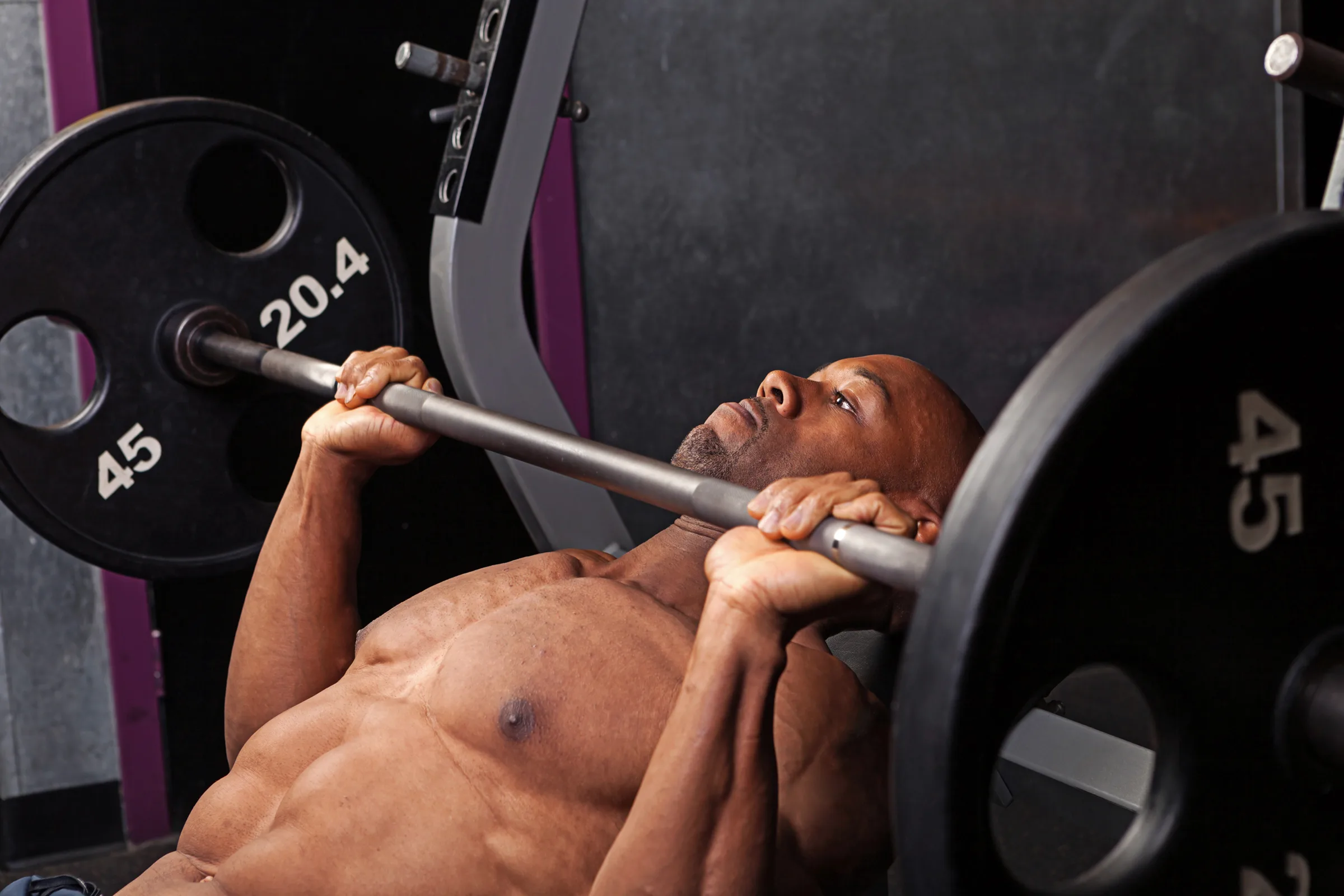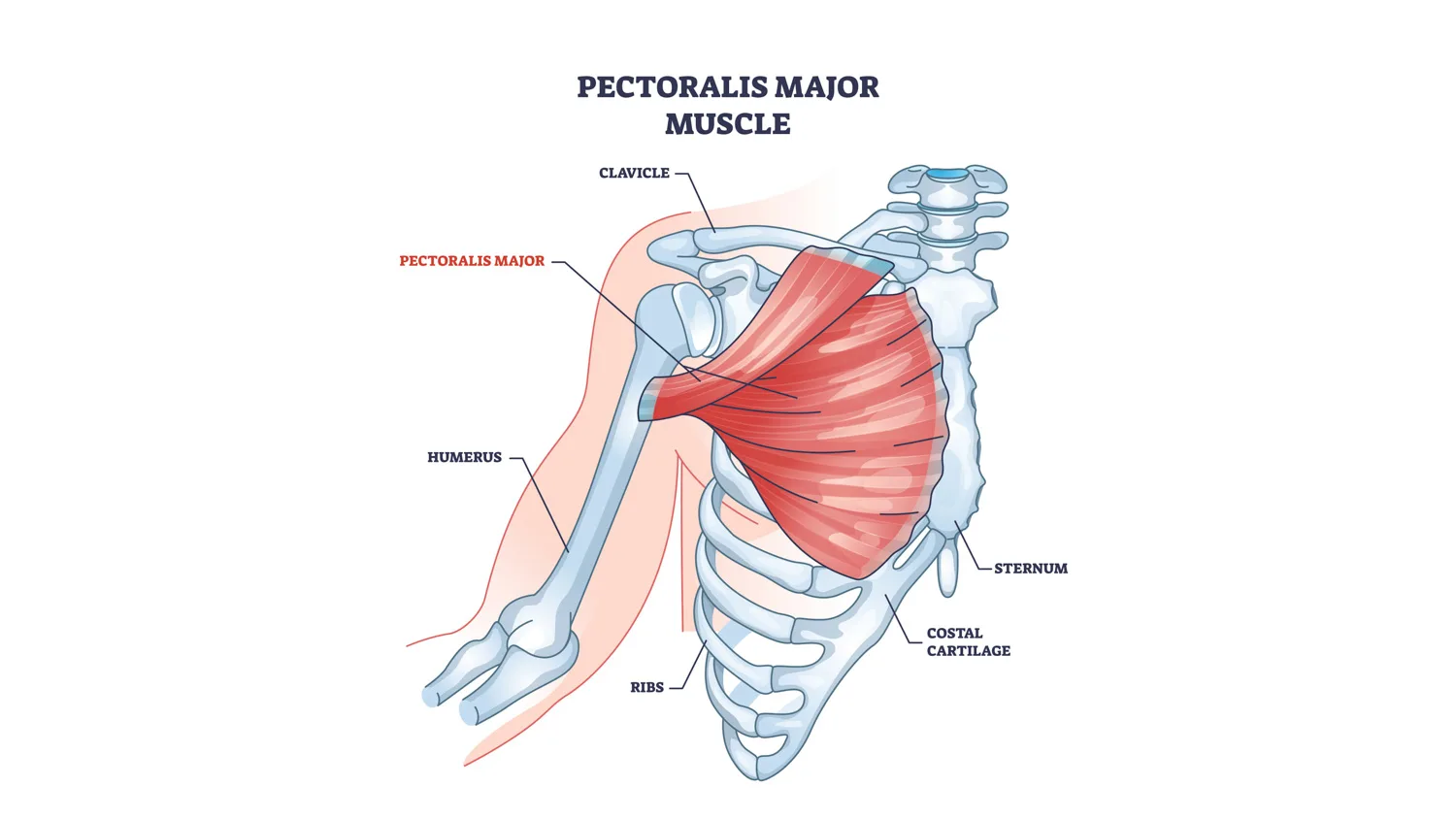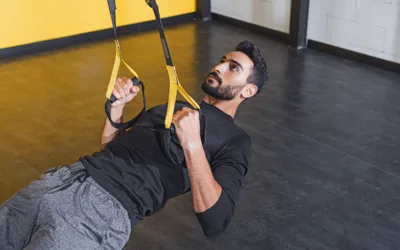How to Do Incline Bench for Meat Slab Pecs

Think incline bench is just another bodybuilding accessory lift? Well, it is. But it’s also a killer strength builder for your entire upper body, including the largest muscle — your pecs. Incline bench is done at an angle between flat bench and standing strict press, so you get a stimulus that’s somewhere in between.
Joseph Lucero, owner of Harvesting Strength, is a powerlifter and strongman coach with years of practical S&C experience in high school, collegiate, and professional settings. Check out his guide on the incline bench and its variations.

Change the Way You Train
Beefier Pecs Incoming
We already know that bench press is the king of all upper body lifts. Ask any gym-goer. However, with great power comes great responsibility. And if the bench press was as wise as my uncle Ben, he would tell you to stop focusing on just the flat bench press.
Performing the flat bench has massive benefits — there are tons of books and articles written about the standard bench press and how to get stronger at it. But if you only do flat bench, you’re missing out on the gains that allow your chest to grow fully. What else do bodybuilders and powerlifters do to get those big, rounded chesticles?
Enter the incline bench.
Let’s get straight into it with a refresher on the structure of those big bodacious chest muscles.
Chest Anatomy
First, let’s change our terminology. Instead of referring to them as the “chest muscles”, let’s call them by their scientific name which is pectoralis major. Now, if there’s a major, there’s a minor. The pectoralis minor only really functions to help with stabilizing the scapula (shoulder blades) to your chest cavity.
When looking at the upper body, the pectoralis major is one of the largest parts of your anatomy. The pectoralis major serves the functions of adduction and internal rotation of the upper arm. This means the pectoralis major helps with various forms of extension (commonly known as “pressing”). Pressing can be done in many different planes of motion, as in traditional exercises like the flat bench, incline bench, decline bench, dips and overhead press.
When you change the direction of the pressing motion, you change the fibers that are being engaged.
When talking about the fibers of the pecs, we are talking about the two main segments which are the “sternocostal” middle region and the “clavicular” upper region. These two regions of the pectoralis major are tough to stimulate simultaneously, unless we consider using the incline bench press exercise.
When using the incline bench press, we’re targeting both the middle region and upper region of the pectoralis major. And if this is the case, that means we’re performing a dominant movement that can build a thicker chest.

Incline Bench Points of Performance
What brings value to this movement has to do with specific details of performance which includes things like set up, grip, modifying execution, different types of equipment and variations of the lift as well.
Set Up
The incline bench predominantly uses a barbell or dumbbells. The perk of using a barbell has to do with overloading the chest and providing a higher stimulus from heavier loads. The problem with a barbell, though, means you need an incline bench setup or something similar. For those without it, using an adjustable bench is fine. You can also elevate one end of a flat bench.
When setting up the incline, it’s ideal to perform this movement between 30-45 degrees. Adjusting a bench higher than 45 degrees changes the press into a shoulder dominant variation.
I suggest using a slightly lower incline to work on the middle region of your chest. Increasing the bench to 45 degrees helps work both the middle and upper regions of the chest.
Grip
If you want to improve your pressing, you need to learn about grip. People think benching with a wide grip means they’ll limit range of motion, improve strength and “stretch” their chest. But a wider grip could cause issues with your shoulder joint.
Compared to a flat bench, not many people are strong from an inclined position. My suggestion is to maintain a grip that is either shoulder width apart or just a fist size outside of that grip. This grip allows you to displace resistance a little better across all your pressing muscles.
Speaking of pressing muscles, the pecs are only one group of muscles you use to press. The secondary movers of a pressing motion are the triceps brachii and the anterior deltoids. Depending on grip and touch point, the triceps and rear delts could have more or less of an influence on the movement.
For those who struggle with the incline press or have an injury, there are other ways to alter your grip. You could use a multi-grip bar to change your hand placement from pronated to neutral, or use dumbbells to adjust your grip for more comfort.
Press
Start off by setting the incline to 30-45 degrees. The higher the incline, the higher the engagement you have with the upper region of your chest (the clavicular head).
Make sure your eyes are below the bar during setup. Grip the bar so it rests across your palms to make sure your wrists are not excessively flexed or extended.
Unrack the weight and place the bar above your upper chest where your touch point will be. Lower the bar by bending your elbows, making sure they’re tucked in toward your lats, keeping your forearms perpendicular to the floor. Retract your shoulders to make your back stronger during the descending motion.
Touch the bar to your chest, then push the weight back up, keeping your elbows under the bar. Repeat for the desired number of reps.
Incline Bench Variations
Depending on your anatomy, you should consider other variations of the incline bench. These variations below can serve a specific purpose for some people, be it working around an injury or just trying something new.
Spoto Incline Press
The spoto incline press involves performing reps within 1-2” of your touchpoint. This allows the motion to stay tense without bouncing the bar off your chest. It also helps reduce the range of motion for those who have issues with the shoulder joint.
Tempo Incline Press
This type of variation helps to improve “time under tension” for those who want to fatigue their chest without excessive volume. Other benefits of the tempo include improving stability and building “elastic tension” for better pressing power. For those concerned, the tempo should last 5-6 seconds on the descending phase and 0-3 seconds on the ascending phase based on strength goals or hypertrophy goals.
DB Incline Press
The dumbbell incline press allows the lifter to freely move their resistance. This can be beneficial to stretch the movement further as well as move the weight closer to the midline of the body for the inner chest. I recommend the dumbbell bench to be a secondary movement after a primary barbell movement.
DB Hammer Grip Press
The dumbbell hammer grip incline press helps to prioritize the triceps brachii and anterior deltoids. This can be helpful for those going through an injury or perhaps want to grow those “lagging” muscles that need to get better. It’s also a sports-specific variation that could help in traditional sports such as “blocking” in football.
Find Your Perfect Training Plan
Sometimes all you need to reach your destination on your fitness journey is an expert guide. We've got you covered. Browse from thousands of programs for any goal and every type of athlete.
Try any programming subscription free for 7 days!
Related articles
Working Out During Ramadan: Maintaining & Making Gains
It’s falsely believed by many Muslim athletes that Ramadan = losing progress (gains!). This isn’t the case if you train, fuel, hydrate, and sleep appropriately. Of course that’s easier said than done, but following a few of these strategies can make all the difference...
The Ultimate Low Back Training Guide: Tips for a Stronger Spine
Low back pain sidelines countless athletes and gym-goers. But here’s the truth: your lower back doesn’t need endless isolation work to stay strong. The real secret? A smart mix of direct and indirect training strategies. This guide breaks it all down, giving you...
6 Practical Tips for New S&C Coaches
You’ve got the degree, passed the certs — you're ready to do the job. Your real coaching journey is just beginning. Success isn’t just about knowing the science, it’s about growing as a leader, communicator, and lifelong learner. Here are six tips to help you navigate...

Join the community
Sign up for the latest training news and updates from TrainHeroic
Support
Made with love, sweat, protein isolate and hard work in Denver, CO
© 2023 TrainHeroic, Inc. All rights reserved.







